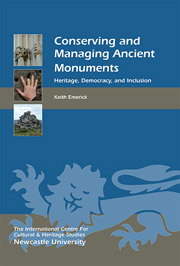Book contents
- Frontmatter
- Contents
- List of Illustrations
- Acknowledgments
- List of Abbreviations
- Introduction
- 1 The Restoration of Hellifield Peel and the Heritage Debate
- 2 The Origins of the Conservation of Ancient Monuments and the Beginnings of State Control in the United Kingdom
- 3 Practice Perfected: the Ancient Monuments Act of 1913 and the Consolidation of State Preservation Practice
- 4 British Conservation Practice in Cyprus, 1878 to 1939: a Case Study
- 5 Current Directions in England: the Emergence of Cultural Heritage Management and the Use of Conventions, Charters and Principles
- 6 Putting Theory into Practice
- 7 Conclusion: Ending the Tyranny of Ruskin and Morris?
- Appendices
- Bibliography and References
- Index
2 - The Origins of the Conservation of Ancient Monuments and the Beginnings of State Control in the United Kingdom
Published online by Cambridge University Press: 05 August 2014
- Frontmatter
- Contents
- List of Illustrations
- Acknowledgments
- List of Abbreviations
- Introduction
- 1 The Restoration of Hellifield Peel and the Heritage Debate
- 2 The Origins of the Conservation of Ancient Monuments and the Beginnings of State Control in the United Kingdom
- 3 Practice Perfected: the Ancient Monuments Act of 1913 and the Consolidation of State Preservation Practice
- 4 British Conservation Practice in Cyprus, 1878 to 1939: a Case Study
- 5 Current Directions in England: the Emergence of Cultural Heritage Management and the Use of Conventions, Charters and Principles
- 6 Putting Theory into Practice
- 7 Conclusion: Ending the Tyranny of Ruskin and Morris?
- Appendices
- Bibliography and References
- Index
Summary
It is a distinct advance to observe that Sir John Lubbock's Bill of nine previous Sessions has become the Government Bill of the present Session; for although, we fear there is no chance of it being passed, yet it is something to have induced the Government to take up a measure connected with so non-political a subject as ancient monuments.
(The Antiquary 1882, 65)Introduction
This chapter provides an outline and analysis of the origins and development of conservation principles and practice in the United Kingdom, beginning with early work on ancient monuments in the 18th century, the formation of archaeological and architectural societies, the subsequent development of preservation initiatives in the mid-19th century and the introduction of ancient monument legislation. The purpose of this chapter is to identify the origin of the principles behind the conservation of ancient monuments. The chapter concludes with the creation of the Ancient Monuments and Historic Buildings branch of the Office of Works.
The period outlined in this chapter marks a dramatic change in the appearance, use and status of those structures that became ‘ancient monuments’, as they changed from being picturesque and romantic ruins to objects of scientific enquiry and educational improvement. This change in appearance and status indicates that the values attached to ancient monuments are not static. The role of politics was to be crucial, as public views changed from acceptance of the pre-eminence of private ownership to the desirability of a conservation ethic for reasons of international status to the introduction of legislation and a concomitant extension of the state into private property matters.
- Type
- Chapter
- Information
- Conserving and Managing Ancient MonumentsHeritage, Democracy, and Inclusion, pp. 29 - 70Publisher: Boydell & BrewerPrint publication year: 2014



